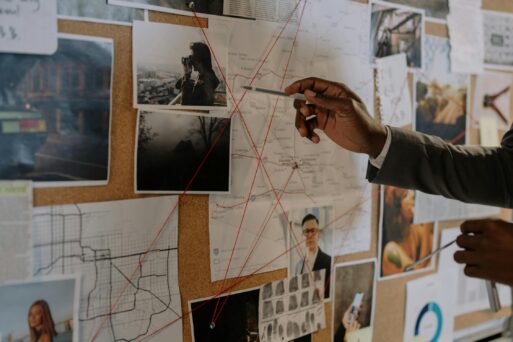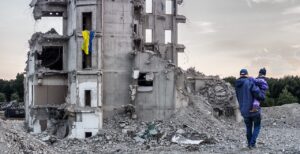 Along with crime mapping, DNA and other useful methods, law enforcement agencies worldwide are using computerized facial recognition technology to identify persons of interest and to help identify the dead.
Along with crime mapping, DNA and other useful methods, law enforcement agencies worldwide are using computerized facial recognition technology to identify persons of interest and to help identify the dead.
The International Criminal Police Organization (INTERPOL) Face Recognition System (IFRS) contains facial images received from more than 179 countries providing a global criminal database, according to its website. The automated software application is capable of recognizing or verifying individuals’ identities by analyzing and comparing facial characteristics.
“Almost 1,500 terrorists, criminals, fugitives, persons of interest or missing persons have been identified since the launch of INTERPOL’s facial recognition system at the end of 2016,” the website reads.
Over in Ukraine, more than 30,000 people have been reported missing as a result of Russia’s invasion since February of 2022, according to a press release from the International Commission on Missing Persons dated Dec. 13, 2023.

“The ICMP has completed the second phase of a campaign that enables Ukrainian refugees residing in Europe to provide genetic reference samples voluntarily, to help locate relatives missing in Ukraine,” the article reads.
“The latest phase of the campaign took place in Poland and Germany in November and December. A total of 165 DNA reference samples were provided by Ukrainian families during the one-week campaign.
“In addition to genetic data, family members also provided data about themselves and their missing loved ones, including the location where the missing person was last seen and the circumstances of the disappearance.”
What happens when DNA is unavailable?
Facial recognition software was used in Kharkiv, a city in northeast Ukraine, according to a BBC article dated April 12, 2022.

Photo of an AI-generated death
Authorities took a picture of a dead man’s face, “his head held up, his sunken eyes directed towards the camera,” the article reads.
“They snapped a picture and ran it through Clearview’s database. The search returned several pictures of someone who looked very similar to the dead man.
“One picture had been taken on what looks like a hot day. The man was shirtless. He had a tattoo on his left shoulder.
“The design matched. They had a name.”
In this case, the picture went through the database of Clearview AI, which can match any photo to more than 10 billion photos collected from the internet, the company claims in a letter to the Ukranian government.
Clearview AI is a privately owned, New York-based company and the letter was sent from its CEO Hoan Ton-That on March 1, 2022, offering the company’s services.
“Clearview AI works effectively regardless of facial damage that may have occurred to a deceased person,” according to the letter.
The technology has also been used in the 2023 Israel–Hamas war as reported in an Oct. 11, 2023, article in Forbes. Soroka Medical Center, located east of Gaza in Beersheva, is using facial recognition to help families locate their missing loved ones.
 “The software is able to take an image of a person, including individuals whose features have been impacted by physical trauma, and find a match amongst photos sent in by concerned family members, according to Ofer Ronen, the executive vice president of global development at Corsight AI, which is providing the technology to the hospital for free,” the article notes.
“The software is able to take an image of a person, including individuals whose features have been impacted by physical trauma, and find a match amongst photos sent in by concerned family members, according to Ofer Ronen, the executive vice president of global development at Corsight AI, which is providing the technology to the hospital for free,” the article notes.
Corsight AI is headquartered in the United States and the United Kingdom with offices in Israel and operations around the world, according to the company’s website.
Criticism of facial recognition technology and users
While the technology has been helpful, some of the providers have received criticism, fines and more serious actions, such as in the ACLU v. Clearview AI case. Also, Senate Bill S.681, introduced on March 7, 2023, imposes limits on federal, state and local government entities’ use of biometric surveillance systems, such as facial recognition systems.
In addition, some schools have decided against the software’s use. On Sept. 27, 2023, a press release was issued from the New York State Education Department. As required by State Technology Law Section 106-b, the order prohibits schools in New York State from purchasing or utilizing facial recognition technology.
“Schools can decide whether to use biometric identifying technology other than facial recognition technology at the local level so long as they consider the technology’s privacy implications, impact on civil rights, effectiveness, and parental input,” according to the press release.
While INTERPOL supports the technology it adds the requirement of a governing structure that protects human rights and personal data.
 “It is rarely possible to identify a victim of a major disaster by visual recognition; fingerprints, dental records or DNA samples are often required for a conclusive identification,” the website reads.
“It is rarely possible to identify a victim of a major disaster by visual recognition; fingerprints, dental records or DNA samples are often required for a conclusive identification,” the website reads.
Meanwhile, in the U.S. more than 600,000 people go missing each year and approximately 4,400 unidentified cadavers are recovered, according to the National Missing and Unidentified Persons database.
About 1,000 of those bodies remain unidentified after one year.
That means some people out there know the thoughts and feelings that come when a loved one is missing.
Without clarity, the family can live with ambiguous loss, a term defined in the 1970s by Pauline Boss, PhD.
She gave the following quote during an interview “Speaking of Psychology: Ambiguous loss and the ‘myth of closure,’” with the American Psychological Association.
“And so what human beings want is not closure after a loss. What they want is certainty of what that loss was. If it’s a human loss or even a pet loss, where the remains are, and that they’re not just missing in action. That ambiguity is very, very stressful on top of a loss. In other words, it exaggerates the pain of the loss. It freezes the grief and it freezes the family processes — the couple and family processes that could go on. No decision-making happens. People wait. And of course, sometimes they wait for decades, which is not functional in families and couples.”
To learn more about ways to cope with grief and loss, see our interview with hospice nurse and end-of-life doula Gabriele Elise Jiminez

 Facial Recognition Technology: Using AI to Identify the Dead
Facial Recognition Technology: Using AI to Identify the Dead


 “Help Me, Helen”
“Help Me, Helen”

 “As Tears Go By” by Marianne Faithfull
“As Tears Go By” by Marianne Faithfull














